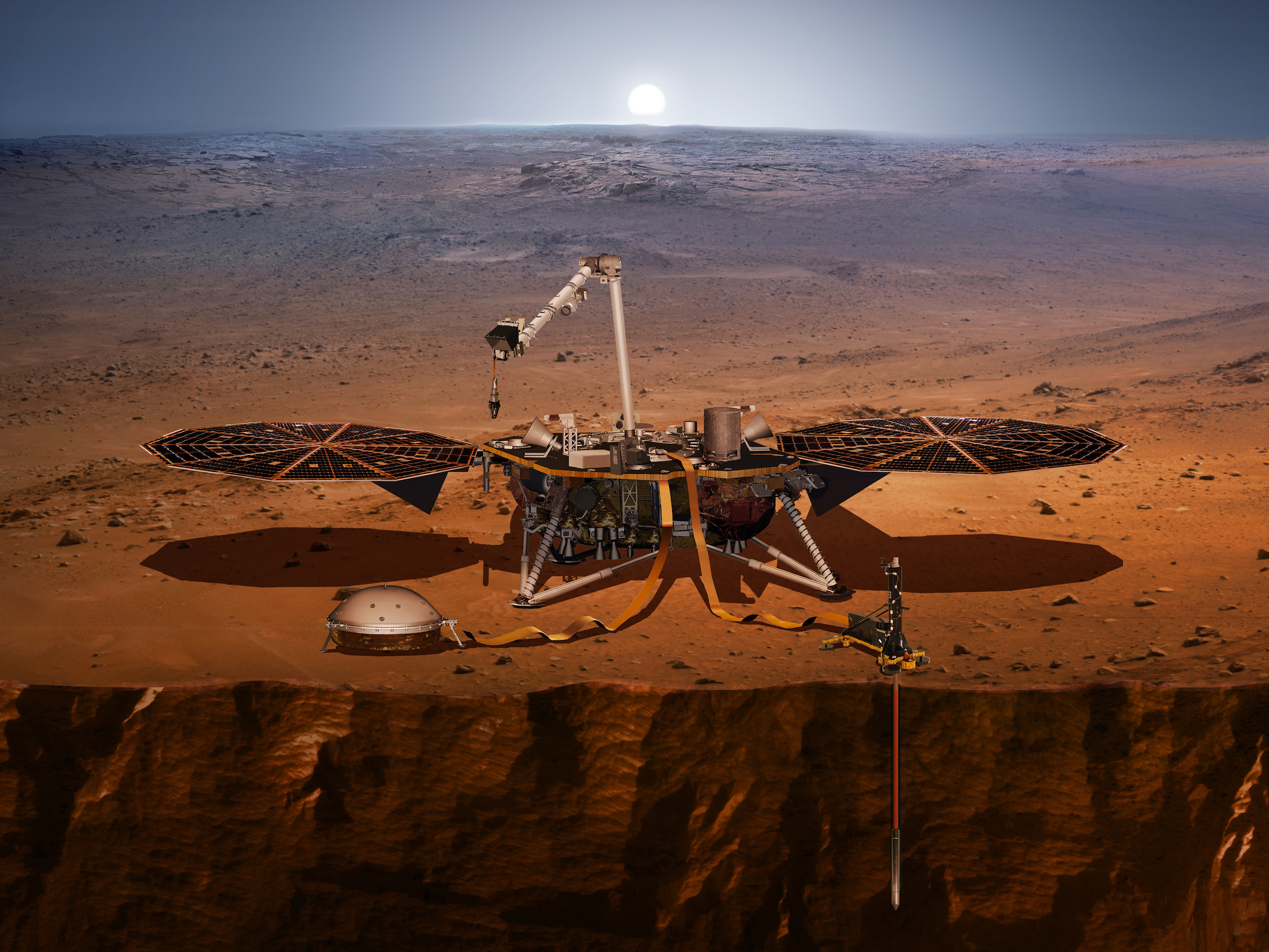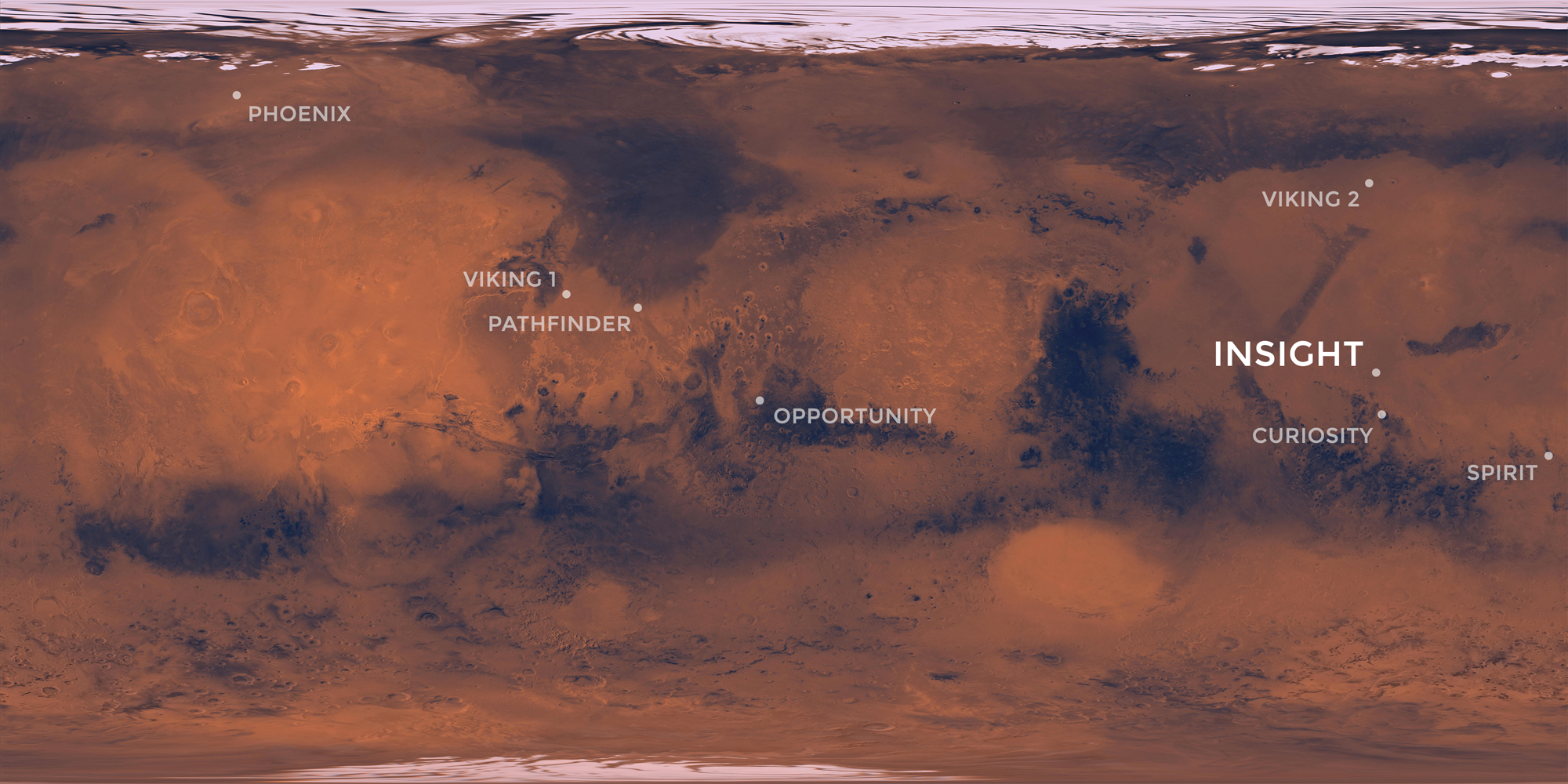One month from today, Mars will welcome a new robotic resident that seeks to probe the planet's innards.
NASA's InSight lander is scheduled to touch down just north of the Martian equator on the afternoon of Nov. 26, bringing a nearly seven-month space trek to an end. InSight launched, along with the two tiny Mars Cube One (MarCO) cubesats, atop a United Launch Alliance Atlas V rocket from California's Vandenberg Air Force Base on May 5.
InSight's entry, descent and landing sequence will be harrowing, as all Red Planet touchdown attempts are. [NASA's InSight Mars Lander: 10 Surprising Facts]

The solar-powered spacecraft will barrel into the Martian atmosphere at 14,100 mph (22,700 km/h), then deploy a big parachute to slow its descent. As the lander nears the surface, it will pop free of its back shell and parachute, touching down softly with the aid of 12 descent engines about 6 minutes after getting its first taste of Mars' air.
That touchdown will come on a high-elevation equatorial plain called Elysium Planitia, a mere 370 miles (600 kilometers) from Gale Crater, where NASA's car-size Curiosity rover landed in August 2012.
Elysium Planitia is "as flat and boring a spot as any on Mars," NASA officials wrote in a statement Wednesday (Oct. 24). And that's why the InSight team chose to land there — for safety's sake.
At Elysium, "there's less to crash into, fewer rocks to land on and lots of sunlight to power the spacecraft," NASA officials added. "The fact that InSight doesn't use much power and should have plenty of sunlight at Mars' equator means it can provide lots of data for scientists to study."
Get the Space.com Newsletter
Breaking space news, the latest updates on rocket launches, skywatching events and more!
InSight won't be investigating surface features, so the "boring" part is no drawback. The lander totes a burrowing heat probe and a suite of superprecise seismometers; observations by both instruments should reveal a great deal about the Red Planet's internal structure and composition, mission team members have said.
In addition, InSight (whose name is short for "Interior Exploration using Seismic Investigations, Geodesy and Heat Transport") will perform a radio-science experiment using its communications gear. This work will track the tiny wobbles of Mars' rotational axis, revealing details about the size and composition of the planet's core.
The various data gathered by the $850 million InSight mission over its roughly two Earth-years of operation should help scientists better understand how rocky planets form and evolve, NASA officials have said.

And about the MarCO twins: Those briefcase-size spacecraft are embarked on a demonstration mission, which aims to show that cubesats can indeed explore deep space. Things are going well so far. One of the twins recently beamed home a photo of Mars — the first Red Planet image ever captured by a cubesat.
The MarCO craft will also attempt to beam home to Earth data from InSight during the lander's touchdown attempt on Nov. 26. But this is not a crucial responsibility for the duo; other NASA spacecraft, such as the venerable Mars Reconnaissance Orbiter, will do this relay work as well.
Mike Wall's book about the search for alien life, "Out There," will be published on Nov. 13 by Grand Central Publishing. Follow him on Twitter @michaeldwall. Follow us @Spacedotcom or Facebook. Originally published on Space.com.
Join our Space Forums to keep talking space on the latest missions, night sky and more! And if you have a news tip, correction or comment, let us know at: community@space.com.

Michael Wall is a Senior Space Writer with Space.com and joined the team in 2010. He primarily covers exoplanets, spaceflight and military space, but has been known to dabble in the space art beat. His book about the search for alien life, "Out There," was published on Nov. 13, 2018. Before becoming a science writer, Michael worked as a herpetologist and wildlife biologist. He has a Ph.D. in evolutionary biology from the University of Sydney, Australia, a bachelor's degree from the University of Arizona, and a graduate certificate in science writing from the University of California, Santa Cruz. To find out what his latest project is, you can follow Michael on Twitter.










